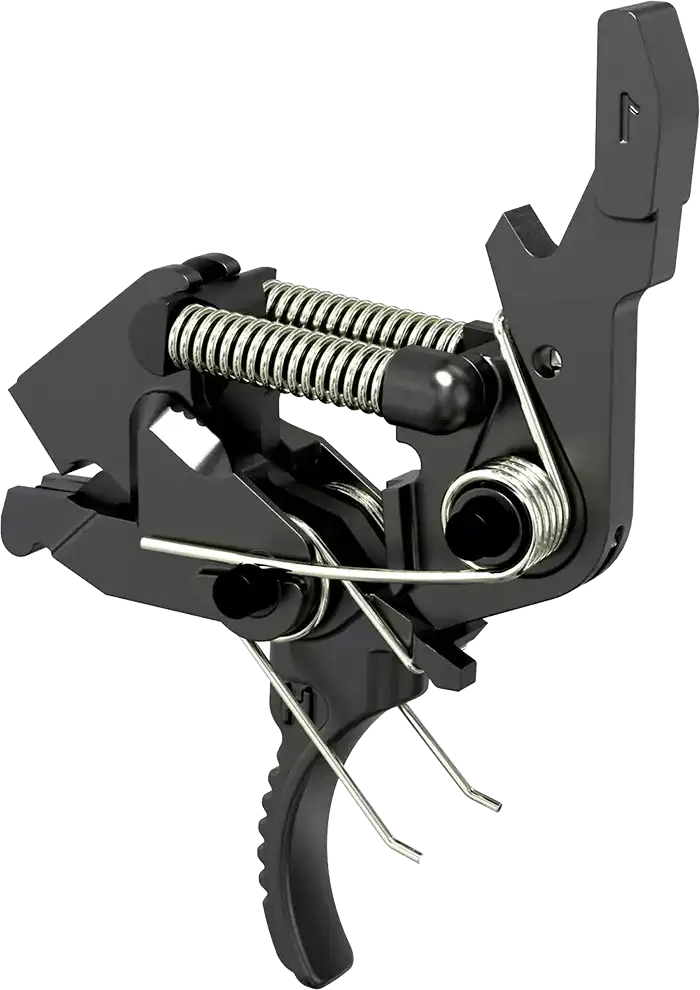How Much Does Your Trigger Weigh?
Or, what’s the weight of your trigger? Is it the actual weight, or are we really talking about the force we must exert on the trigger to get it to release the hammer? If so, that would be its pull weight or pull force, just to add some clarity to what we really mean by trigger weight.
The “trigger weight” terminology derives from hanging dead weights from the trigger’s bow with the firearm’s muzzle pointing up, to measure the amount of weight that must be added to get the trigger to break. For example, that’s how an NRA deadweight tester works.
Most shooters focus on the pull weight of a trigger, thinking that is the most important metric when evaluating how good a trigger might be. The idea is that the lower the weight, to some limit, the better the trigger. A practical trigger safety limit for a bench-rest shooter might be 2 ounces. But that trigger weight in a semi-auto rifle like an AR15 would be scarily unsafe not only during normal handling but most certainly rough handling like dropping it on the ground when pulling it out of your pickup’s cab. So, when we say “good weight,” that will depend on what you’re going to do with the firearm.
Well, shooters have many opinions on what weight makes a good trigger or even an excellent trigger. Manufacturers are also very opinionated on the topic, especially here at HIPERFIRE.
You see, different types of triggers will have different weights depending on what other factors mighty be emphasized. Some triggers are MIL-spec safe, or operator safe, during stressful engagements. A 3-Gun competitor might consider the “stress factor” differently and usually opts for pull weights and are at least half the MIL-spec standard. These triggers are generally of single-stage design.
Long-range precision hunters or competitors may opt for a 2-stage design. A first stage take-up of low pull weight, then the second stage of slightly higher weight called “the wall.” Dividing the trigger’s travel into these two distinct segments helps the shooter to manage the semi-auto’s requisite creep. When the wall is breached, the shot is made.
A third category would be the so-called “drop-in” trigger that could be of either single or 2-stage design. This is the point: we have many different trigger types from many different manufacturers for many different kinds of shooters with many different opinions as to what is a perfect trigger weight.
How can we decipher this to make decisions about triggers that are so very different?
HIPERFIRE has scrutinized this issue because we are both shooters and a manufacturer. We agree with the general consensus that lower trigger weight is better. Take a look at the chart below that compares the pull weights of some HIPERFIRE triggers against some very popular after-market drop-ins. The data looks very different among them, doesn’t it? It’s also overwhelming and somewhat confusing, isn’t it?

Chart showing pull weight scans of HIPERFIRE and other’s triggers.
This Is What It Means
- Go to HIPERTECH Bulletin #3 at hiperfire.com explaining how the data was collected.
- The Bulletin has many more charts that begins our conversation on what makes a good trigger with the weight metric. Ultimately, we want to show you that the conversation doesn’t end with weight.
- The charts compare the most popular and arguably the most excellent after-market AR triggers the shooter can buy.
Why Is This Beginning Important?
HIPERTECH Bulletins #1 and #2 began by introducing you to the exclusive Cam-Over Toggle Engine™ and Radical Sear Mechanics™ features in our triggers. Now, we show you what that did to lowering trigger weight.
Bulletin #3 gets into the details, but it can be challenging for some to understand. So, let’s boil it down. Your trigger finger can tell no lie. It knows what it likes without all the charts. That’s why trigger manufacturers resort to the feel-good taglines. They know that data doesn’t sell triggers, or that if purchasers relied on the data to make decisions, they would receive the short straw. HIPERFIRE knows the data in and out, we designed our products with the data-driven insight into what our trigger finger knows to be the truth. Now that we could quantify the pull weight and other vital metrics, we could reproduce an ideal feel across many different trigger products to give many different shooters what they only could have dreamed of before.
HIPERTECH is written for you. Use it to expand your consciousness, then expand your shooting experience. Message me here if you have any questions about HIPERTECH Bulletin #3. Remember, this HIPERTECH series is long, we’re just getting started.








